Bruges, located about 62 miles west of Brussels, and thus much closer to the North Sea, is one of the most enchanting cities of Belgium. UNESCO declared the entire city a cultural heritage site in 2000. Bruges received its City Charter in 1128 – so it’s been around a while. As with all cities it has had its ups and downs over the last 1000 years or so, being under control of French dukes, Spanish/Dutch masters and German/Austrian incursions. After 1965 the original medieval city experienced a renaissance. Restorations of residential and commercial structures, historic monuments, and churches generated a surge in tourism and economic activity in the ancient downtown area. International tourism has boomed, and new efforts resulted in Bruges being designated ‘European Capital of Culture’ in 2002. It attracts some eight million tourists annually but, according to our guide, we had arrived during a quiet time so there were not the crowds she usually encounters.
To start our tour, we gathered together with City Tours guide Jasmine and fellow tourists from Indonesia, South Korea and NYC. Seven of us were driven in a Mercedes van (with our guide) from Brussels to Bruges arriving around 11:00 or so to beautiful weather! It had been raining recently but the entire time we were on our tour it was lovely – some clouds but lots of sunshine and cooler temperatures.
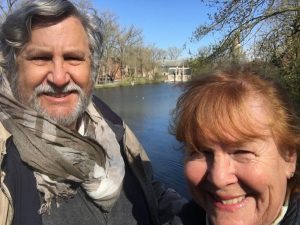
First up was a walking tour across the Bridge over Lovers Lake and through the Princely Beguinage Ten Wijngaerde – a community of pious women beginning in 1244 – now a priory of Benedictine nuns who live and work in the buildings.
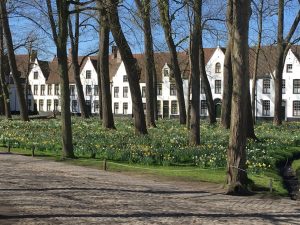
The entrance building was at one of the bridges and is dated 1776.
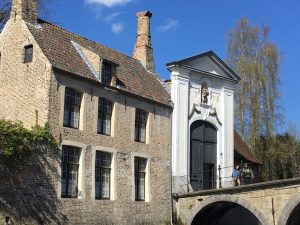
From there we walked along various cobblestone streets and found ourselves at the dock for a 30-minute boat tour of the central city canals aka, Little Venice.
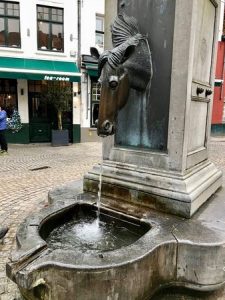
The boat went through several of the canals while the guide pointed out historic buildings along the way.
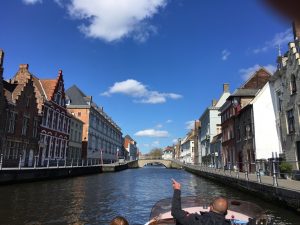
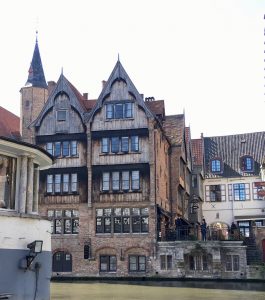
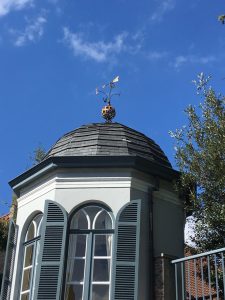

It is clear there has been a lot of work done to preserve the area – evidence of cleaning, new paint and scaffolding activities were evident.
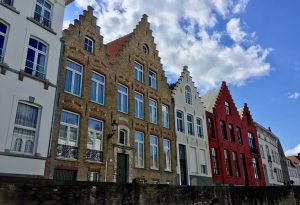
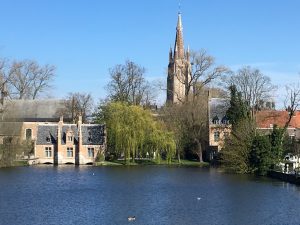
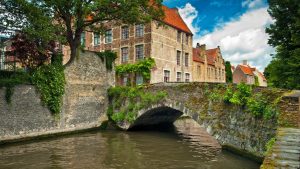

One of the local landmarks is the Church of Our Lady with its tower of 379 feet and is the second tallest brickwork tower in the world.

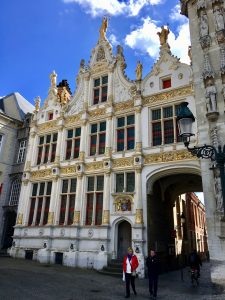
Our guide pointed out this “brick mountain” tower on the boat ride as well as several times during our tour. This church has a sculpture of the Madonna and Child created by Michelangelo around 1504 (we didn’t go to see it however).
Our next stop was to walk through some of the shopping areas, visit the fish market and a quick visit to Church of the Holly Blood.

The church houses a venerated relic of the Holly Blood
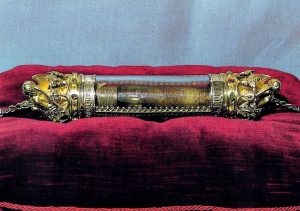
allegedly collected by Joseph of Arimathea and brought from the Holy Land by Thierry of Alsace, Count of Flanders in the 12th century. The basilica in Burg Square consists of a lower and upper chapel. The lower chapel, dedicated to St Basil the Great, is a dark Romanesque structure that remains virtually unchanged. The venerated relic is in the upper chapel, which was rebuilt in the Gothic style in the 16th century and renovated in the 19th century in Gothic Revival style.
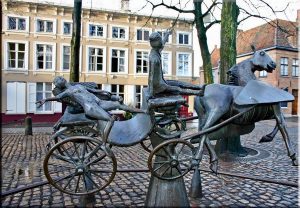

Now it was time for lunch, a little shopping and a cold beverage.
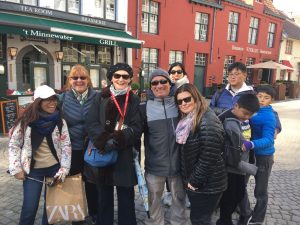
Our break was in the Market Square – a large area with a fountain in the center and lots of restaurants around.
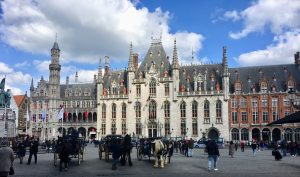
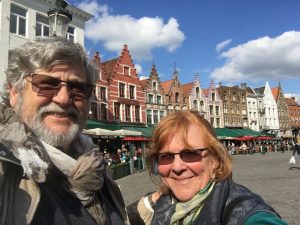
Buildings around the square included Stadhuis (City Hall and a 13th century belfry with a 47-bell carillon and 272-foot tower with panoramic views.
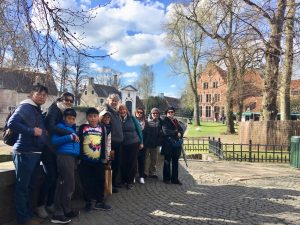
After lunch we headed back to our coach passing ,more interesting buildings, bridges and waterways. All in all a beautiful day to visit this historic town.
Good pictures and descriptions. Keep on going!